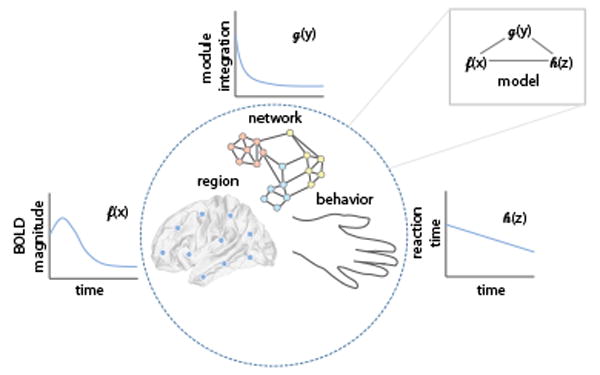Figure 4.

A Network-Based Theory of Learning. We suggest that a network-based theory of human learning will require models that explicitly bridge network models of brain function with mathematical models of human behavior. In this conceptual schematic, we illustrate the idea that changes in regional activation, network architecture, and behavioral measures can be linked mathematically in a formal modeling framework. We are careful to note that, although we suggest example variables of interest [blood oxygen level-dependent (BOLD) signal magnitude, module integration, and reaction time] and example temporal trends of these variables with learning, the particular functions may depend explicitly on the neuroscientific question of interest.
